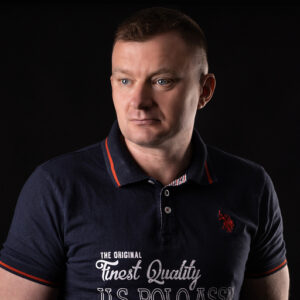In recent years, the refugium has grown in popularity and become a trend in marine aquaristics. It is one of the oldest ways to filter aquarium water. A refugium is a place where we keep macroalgae, but bacteria and invertebrates also settle here. The algae break down inorganic compounds, while the bacteria and invertebrates break down organic matter from the main aquarium.
Do you need a refugium?
A refugium is not absolutely necessary to have a beautiful reef tank. However, there are quite a few benefits to having a refugium in a marine aquarium.
A refugium helps to keep NO3 and PO4 levels low in the aquarium, helps to control the growth of nuisance algae and, very importantly, stabilises and maintains the correct pH of the aquarium.
Refugium replaces or supplements the work of a skimmer to some extent. It is an ecological approach to removing pollutants from aquarium water.
Most favourable refugium size
The larger the refugium, the better. The smallest sensible size is 20% of the aquarium volume. I know of cases where the refugium had the same volume as the aquarium, or was even larger than the main aquarium.
Macroalgae
I recommend Chaetomorpha or chaeto. They grow fast, but do not grow sexually like Caulerpa sp. (which can cause problems in the aquarium).
Just put in a portion of algae and let them grow. When they fill the refugium, trim them and discard, share with other aquarists or sell.
Lighting
In order for the algae in the refugium to grow effectively, good quality lighting must be provided. Lighting dedicated to the refugium with a spectrum designed for plant growth (range 4500-6500 K) will work well here.
How long to light algae in a refugium?
Opinions on this are divided. To date, no one has proven that a specific refugium lighting scheme is ideal, at least for all systems. Algae-stocked refugiums seem to work well if they get at least 10 or 12 hours of intense light per day.
There are aquarists who light refugiums 24 hours a day, and the effect is not bad either.
One method worth mentioning uses what is known as reverse light time over the refugium. This relies on the fact that when the light in the main aquarium goes out, it comes on over the refugium. The benefit of this, at least in theory, is that at night the pH in the marine aquarium drops. If we run the light over the refugium at night, this stabilises the pH in the aquarium. In this approach, the diurnal fluctuation of pH can be stabilised.
Should I supplement the refugium to make the algae grow faster?
There is no need for water of any specification to make the refugium grow. However, I know of cases where experienced aquarists dose iron. There are also preparations for refugium available on the market.
Animals in the refugium
Small crustaceans are some of the best organisms to keep in a refugium. Copepods, amphipods, mysis shrimps and other small creatures are popular food sources for marine fish. It is almost impossible to breed them in the main aquarium, as they will not be able to reproduce quickly enough before they are eaten. However, a refugium will occasionally pump a number into the main tank, providing a tasty feast for the ever-hungry fish.
How to make a refugium?
The most common way is to make a special baffle in the sumo. Another way is to have an additional aquarium connected to the system with the sump using a circulation pump. You can easily make the whole system yourself or buy a ready-made refugium from a marine aquarium shop.
Reducing algae in the refugium
Every two to four weeks (depending on the rate of algal growth) we should get rid of some of the algae from the refugium. This will make room for the growth of more. The growing algae absorb the unfavourable compounds from the aquarium and the whole refugium-based filtration process continues.
Summary
If you are planning to set up a marine aquarium and have extra space in the sumo or are building a sump room that will have room for an additional aquarium, then creating a refugium is worth considering.
Would I recommend a refugium to anyone without exception? No, although it is a solution that offers specific benefits. However, it is worth remembering that it is one of many types of filtration. A well-built aquarium with the right number of fish will filter the water itself and keep the parameters at the right level. If you are planning a larger fish stocking, want to stabilise diurnal fluctuations or simply want a beautiful refugium, it can be done.
About the author

Marek Protasewicz
Reefkeeping has been my passion for over 10 years now. I love learning. The hobby has taught me many valuable lessons, patience being the best example.
Combining work and passion is my path. I run Crazy Coral, a marine aquarium shop, for a number of years. Building this business from the scratch I learnt from my own mistakes at a heavy cost.
Later I managed a project aimed at development of methods for quick growth of Corals in non-natural conditions. The project was carried out by Get Sales, Poland.
Presently, I am responsible for distribution strategy at Reef Factory, of which I am a
co-founder. The company produces smart devices for marine aquaristics.
The last projects I have been involved in are Social Reef and ReefPedia.



